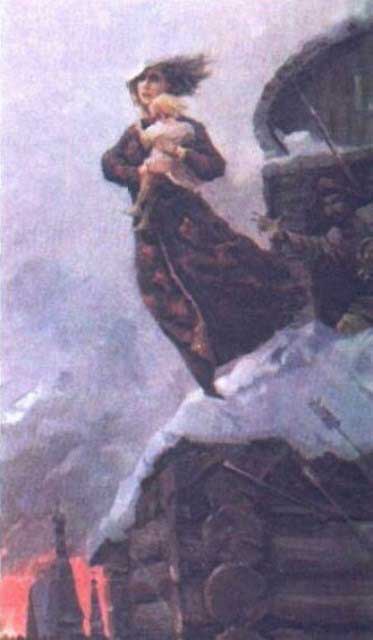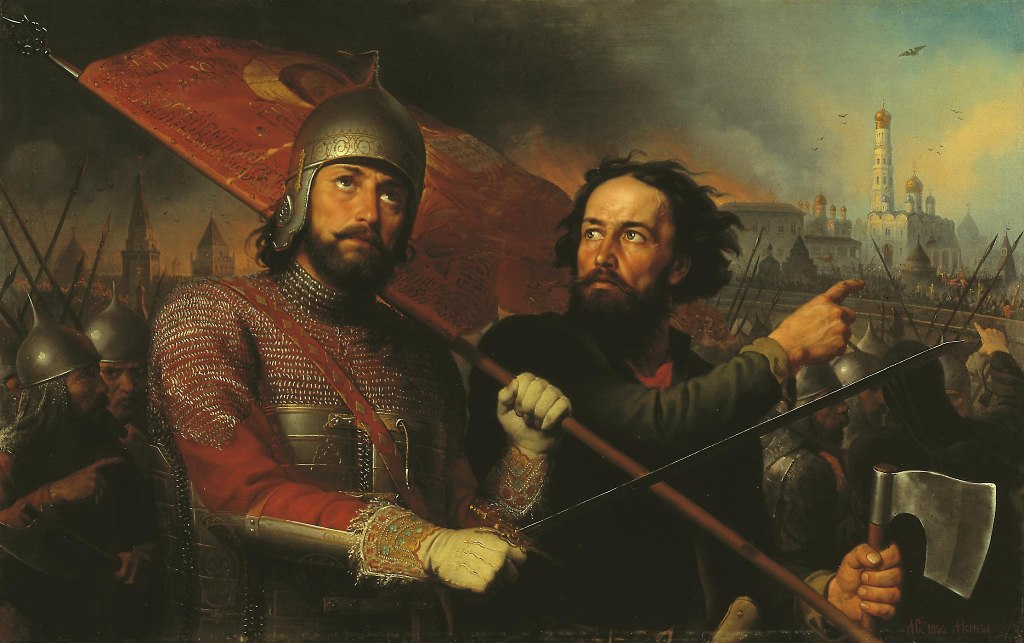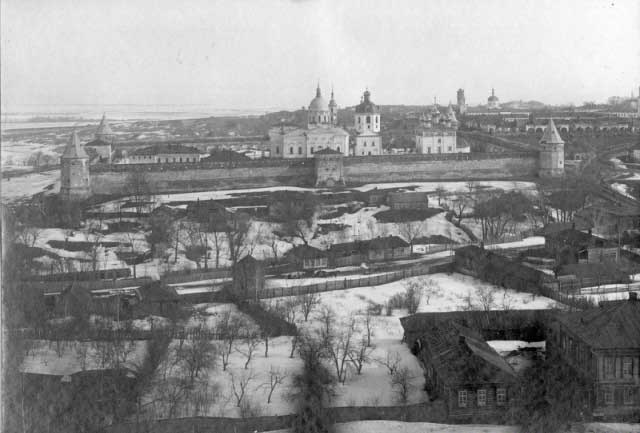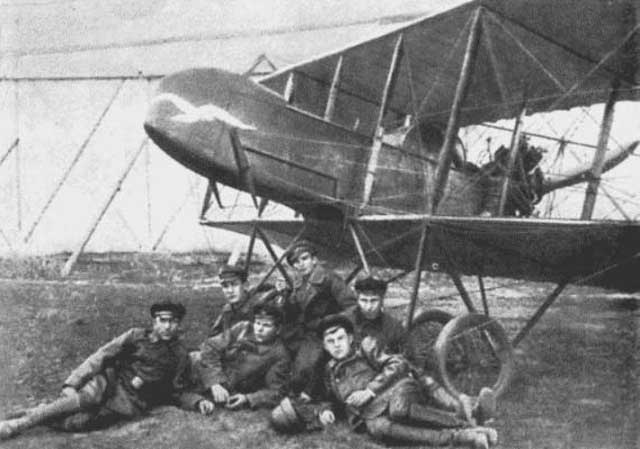History of Zaraisk
12th Century
Osyotr
Zaraisk was first mentioned as Osyotr in 1146 in the Nikon Chronicle when Prince Svyatoslav Olgovich of Chernigov and Novgorod (grandson of Yaroslav the Wise) paid a visit. However it was probably later destroyed during nomad raids.
13th Century
Mongol-Tatar Invasion
 The settlement was mentioned once more as Krasny in 1225 when an icon of St Nicholas was transferred there from Korsun (Khersones in Crimea). Krasny was part of the Ryazan Principality and had its own prince - Prince Fyodor Yurievich, who was son of Prince Yuri Igorievich of Ryazan. In 1237 Krasny was burned to the ground by Batu Khan during the Mongol-Tatar invasion of Rus. Legend has it that Prince Igor Yurievich was killed by Batu. Igor Yurievich's wife, Yevpraksia, decided to jump out of a building with her infant son Ivan rather than be taken prisoner by the Mongols. One proposed theory of why the city is named Zaraisk is because Yevpraksia is said to have "zarazila" meaning something along the lines of being smashed instantly to death. In any case, after these events the Cycle of Tales of St Nicholas Zarazsky (later Zaraisky) was completed and is considered a masterpiece of ancient Russian literature. When Krasny slowly recovered from the Mongol-Tatar onslaught it became known as Nogorodok-na-Osetre.
The settlement was mentioned once more as Krasny in 1225 when an icon of St Nicholas was transferred there from Korsun (Khersones in Crimea). Krasny was part of the Ryazan Principality and had its own prince - Prince Fyodor Yurievich, who was son of Prince Yuri Igorievich of Ryazan. In 1237 Krasny was burned to the ground by Batu Khan during the Mongol-Tatar invasion of Rus. Legend has it that Prince Igor Yurievich was killed by Batu. Igor Yurievich's wife, Yevpraksia, decided to jump out of a building with her infant son Ivan rather than be taken prisoner by the Mongols. One proposed theory of why the city is named Zaraisk is because Yevpraksia is said to have "zarazila" meaning something along the lines of being smashed instantly to death. In any case, after these events the Cycle of Tales of St Nicholas Zarazsky (later Zaraisky) was completed and is considered a masterpiece of ancient Russian literature. When Krasny slowly recovered from the Mongol-Tatar onslaught it became known as Nogorodok-na-Osetre.
16th Century
Zaraisk Kremlin

In 1521 along with the rest of the Ryazan Principality, Nogorodok became part of the Moscow Principality. Grand Prince Vasili III ordered the construction of a stone kremlin here to protect Moscow's borders as part of the Great Abatis Boarder. The kremlin was built between 1528 and 1531 and probably involved Italian architects who were working in Russia at that time. It was not long until the kremlin had its first test, in 1533 Crimean Tatars attacked. They attacked once again in 1541 but were not able to take the kremlin. Crimea Tatar raids occurred several times again during the late 16th Century. Around this time, Nogorodok was also referred to as Nikolo-Zarazskoy-na-Osetre after the famous icon there.
17th Century
Time of Troubles

In 1608 Polish-Lithuanians supporters of the Second False Dmitri defeated troops from Arzamas and Ryazan outside of Zaraisk and took the city. The city was liberated in 1609 by Ryazan troops lead by Prokopi Lyapunov. From 1610 to 1611 Zaraisk's voevod (military governor) was Prince Dmitri Pozharsky. During his time as voevod, Prince Pozharsky suppressed a rebellion of False Dmitri supporters and saw off Ryazan troops who had switched sides to False Dmitri. In 1611 Prince Pozharsky joined the First People's Army led by Lyapunov and subsequently went on to lead the Second People's Army with Kuzma Minin which succeeded in liberating Moscow from Polish-Lithuanian Interventionists.
18th Century
It was only in the 17th century that the city became officially known as Zaraisk. In 1778 it became the centre of the Zaraisk District of the Ryazan Governorate. In 1779 it was granted a coat of arms by Empress Catherine the Great. The top half of the coat of arms depicted a silver sword and sheath in a cross on a gold background, a symbol of Ryazan. The bottom half depicted a tower of the kremlin being backlit by the rising sun on a blue background.
19th Century

In the 19th century Zaraisk's bread industry started to develop and today the city remains one of the main agricultural areas of the Moscow Region. Zaraisk's economic development was dealt two blows in the 19th century, the first in 1847 when the road to Ryazan from Moscow was not built through Zaraisk and then in 1864 when the Moscow-Ryazan Railroad passed via Kolomna and again meant Zaraisk was overlooked. However despite this Zaraisk managed to develop a leather and textile industry.
20th Century

In 1918 the Gatchina School for Military Pilots was decentralised and the 1st Moscow School for Military Pilots was established in Zaraisk and remained there until 1922 when it was moved to the Crimea. In 1929 the city became part of the Ryazan District of the Moscow Region and then in 1937 it became part of the Moscow Region directly. During the Second World War, in December 1941, a German tank army was successful stopped on its approach to Zaraisk and then forced to retreat by the 10th Army of the Western Front.


 History
History